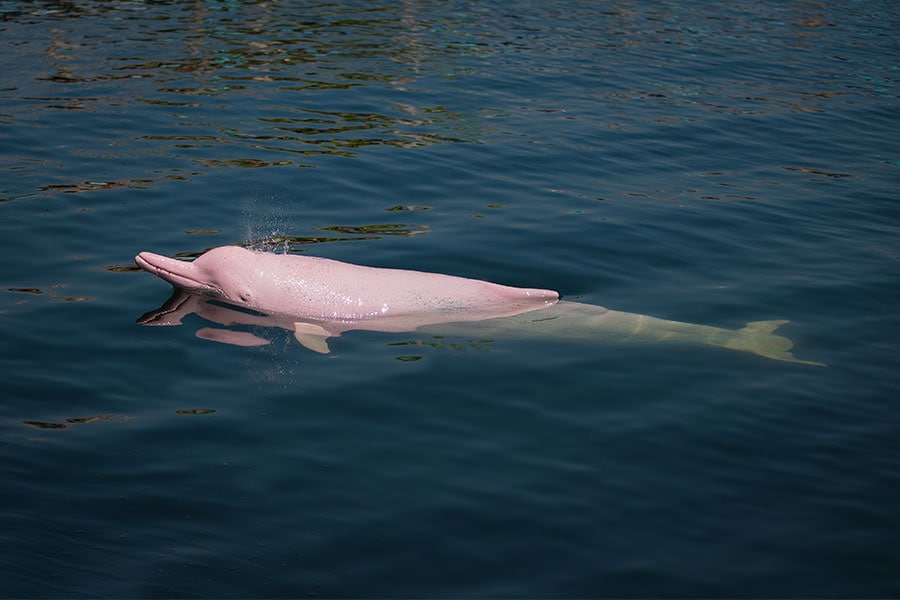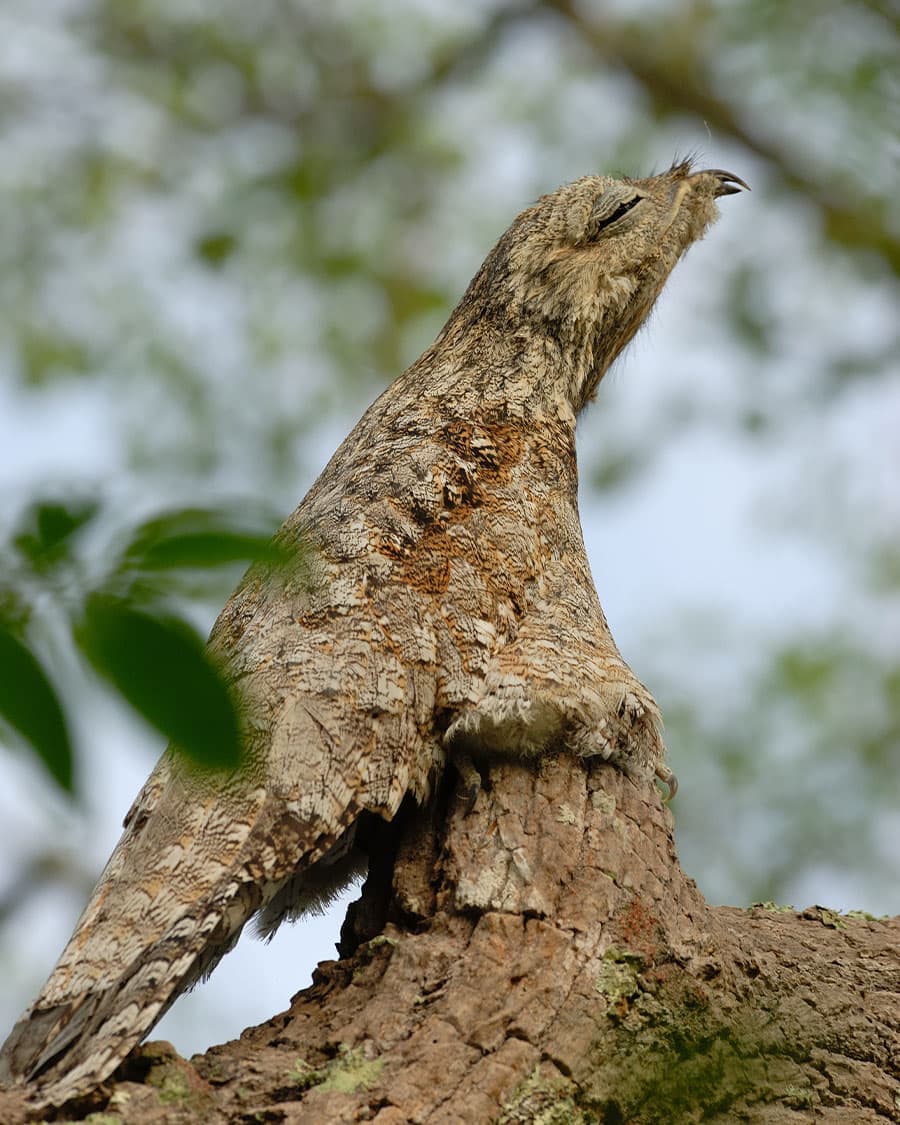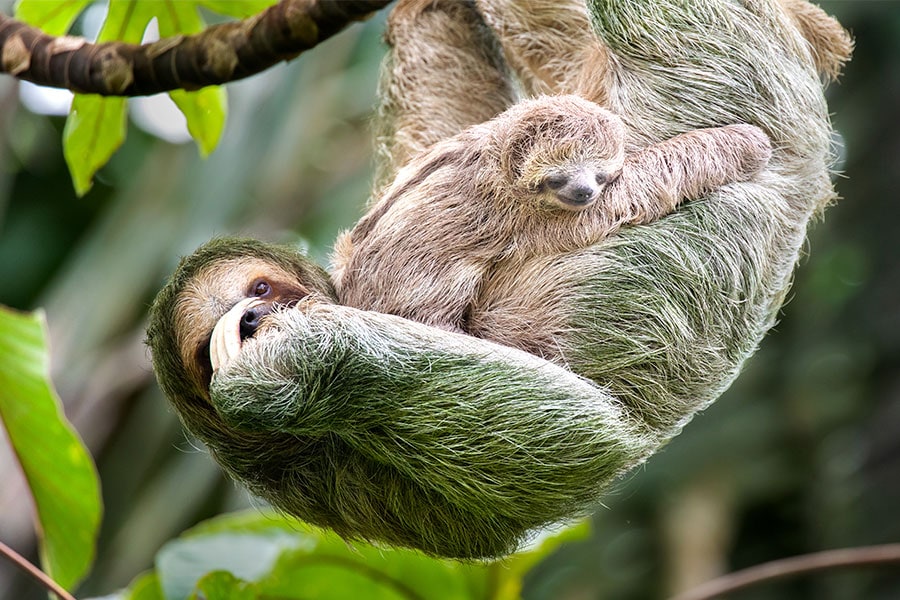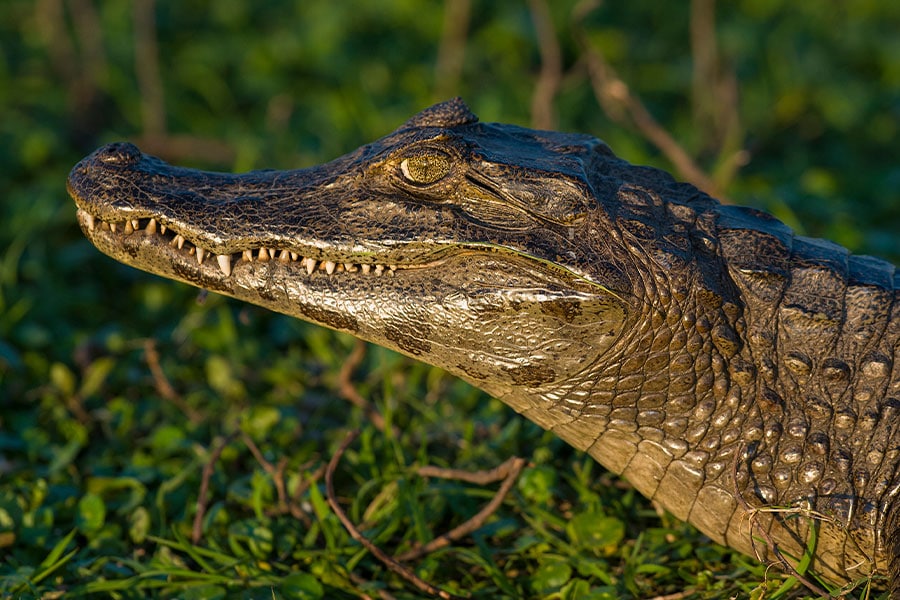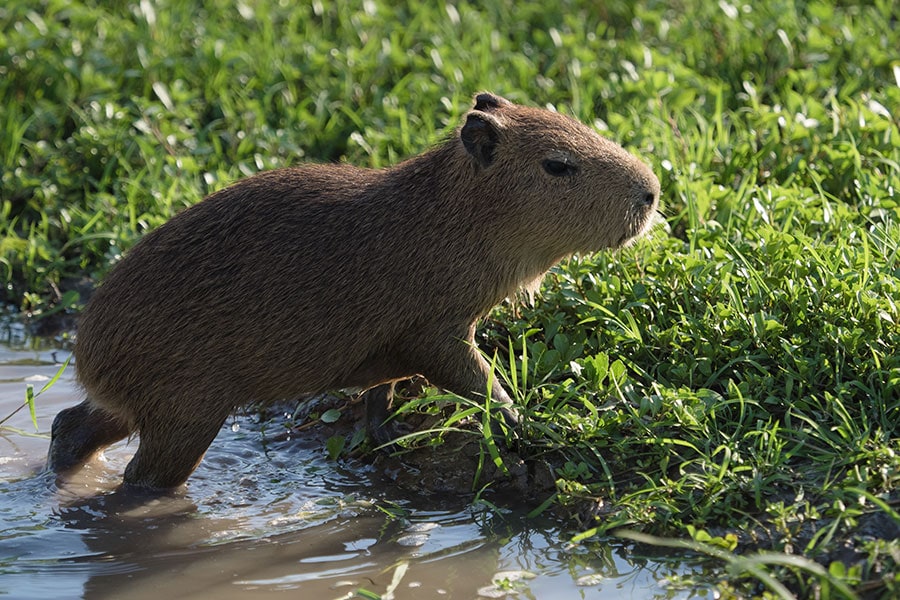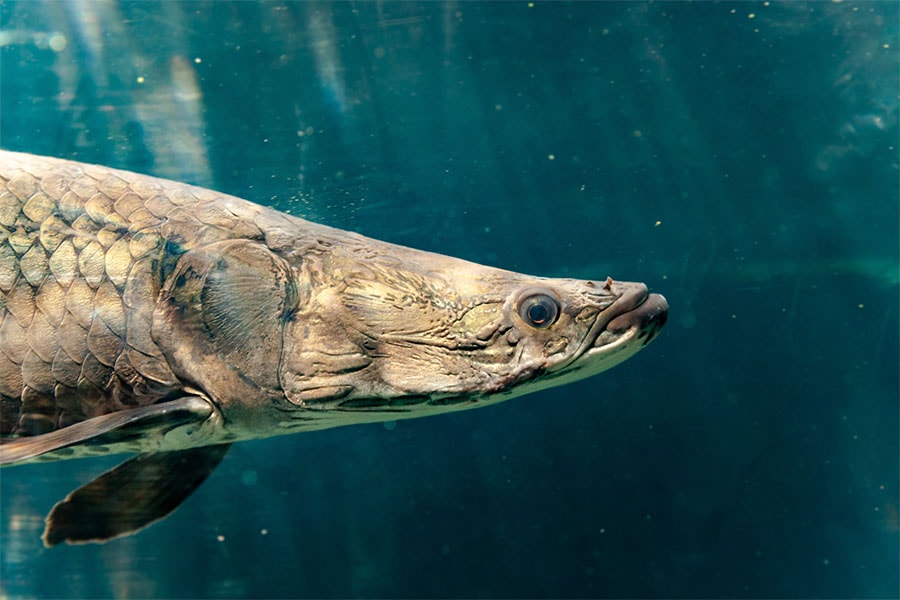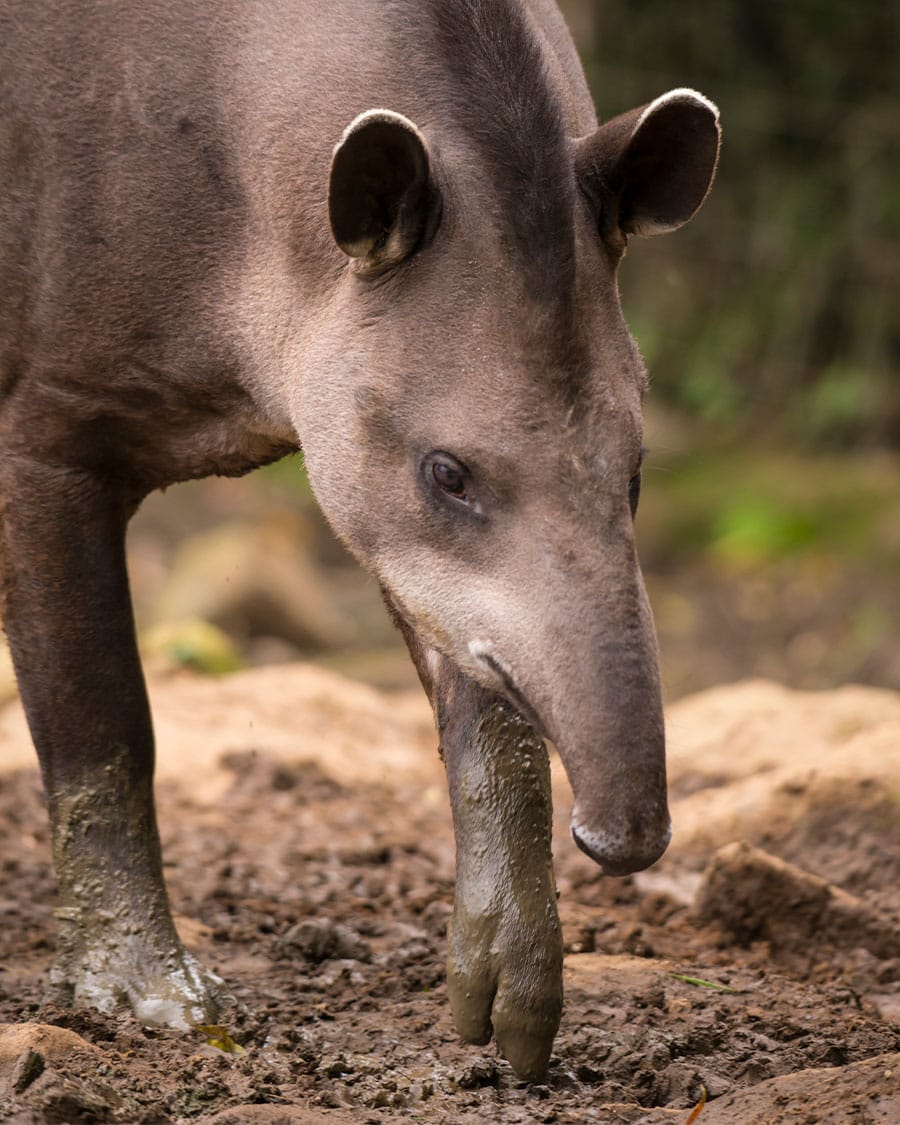
Top 15 Must-See Amazon Animals on a River Safari
Located between the Marañón and Ucayali rivers, two major tributaries of the mighty Amazon river, the Pacaya Samiria Natural Reserve is the largest national reserve in Peru, representing 1.5 percent of the country’s total surface with an area of 8,000 square miles (20,800 square kilometers).
The waterways and black lagoons of this beautiful reserve are known as the ‘mirrored forest’ by wildlife lovers, thanks to their still and reflective nature. With an astounding 1,025 species of vertebrates, 449 species of birds, 256 species of fish, and 965 species of wild plants, visitors can expect to keep their binoculars on hand at all times, ready for an exotic Amazonian creature to pass by.
Getting up-close to the multitude of wildlife in the Amazon rainforest is not an easy task, which is why an experienced guide and a well-organized river expedition is a must. Aqua Expeditions’ local guides have lived most of their lives along the banks of the Amazon and offer an immense knowledge of its surroundings. With over 15 years of experience, they possess an incredible talent to identify every bird and mammal calls. Our birdwatcher guide specialist expert George Davila can even imitate the unique sounds of dozens of bird species native to the Amazon region, almost to perfection.
With a genuine passion to teach guests about the wonders of the Amazon, its complex ecosystem, and how to take care of it, Aqua’s naturalist guides are an essential part of the Aqua experience, making every excursion educational, fun, and memorable.
We have selected 15 must-see Amazon River animals which guests can expect to see while exploring the Peruvian Amazon. Learn about the unique characteristics of each species and their International Union for Conservation of Nature (IUCN) status as we take you on a virtual tour of the Peruvian Amazon’s exotic wildlife.
1) Jaguar
IUCN Status: Endangered
The apex predator of the Amazon is a sight best seen from a distance. Jaguars are the third largest felines in the world, behind only lions and tigers. The spots – or rosettes – on their coat allow jaguars to camouflage within the Amazonian undergrowth. They are stalkers which prey on just about anything that moves. Beyond animals such as deer, birds, and monkeys, jaguars have been known to take down other predators such as caimans too.
Given their endangered status and elusive nature, a jaguar can be a rare sighting in the Peruvian Amazon. However, sometimes we get lucky and get to capture shots like the one below, of a young jaguar swimming over to the shore.
The name ‘jaguar’ was derived from the Native American word ‘yajuar’ which means ‘he who kills with one leap’. It’s a fitting description for these big cats which have one of the most powerful bites in the animal kingdom. While lions and tigers usually go for the neck when making a kill, jaguars are able to bite through the skull of their prey. They can even get past crocodile hides and turtle shells.
2) Pink river dolphin
IUCN Status: Endangered
The mostly unpopulated stretches of the Peruvian Amazon are one of the last refuges for the pink river dolphin, whose numbers are dwindling downriver due to killings by humans and lack of food due to overfishing.
At Pacaya Samiria National Reserve, a healthy population of pink river dolphins finds their safe shelter. More importantly, these highly intelligent creatures have built a rapport with us and enjoy our company every time we sail past or visit their habitats on excursions. Guests aboard the Amazon river cruises can expect very special encounters; these creatures swim and leap out of the water — often in pairs — within touching distance of our skiffs. Watch here:
3) Red-Bellied Piranha
IUCN Status: Least Concern
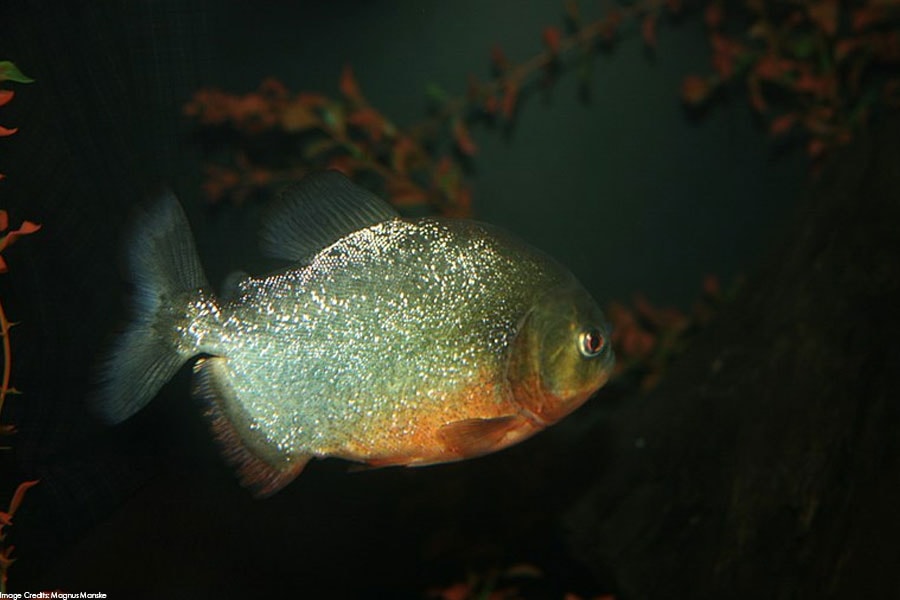
Piranhas are one of the most notorious animals in the Amazon basin. They’ve inhabited the region for millions of years, and evolved into over twenty different species. Red-bellied piranhas are, perhaps, the best known of the lot. After all, they’ve starred in plenty of horror blockbusters over the years.
In reality, piranhas aren’t quite as dangerous as Hollywood makes them out to be. They rarely attack without being prompted first. Although they can smell a drop of blood in 200 liters of water, doing so doesn’t really send them into a killing frenzy.
Aboard the Aqua Nera, guests will have no shortage of exciting moments while cruising along the Amazon. There’ll be an opportunity to go piranha fishing, and if time permits, we might even get to see local fishermen making their daily catch. Don’t worry, we always put safety first for you!
4) Peruvian Black-Capped Squirrel Monkey
IUCN Status: (Data deficient)
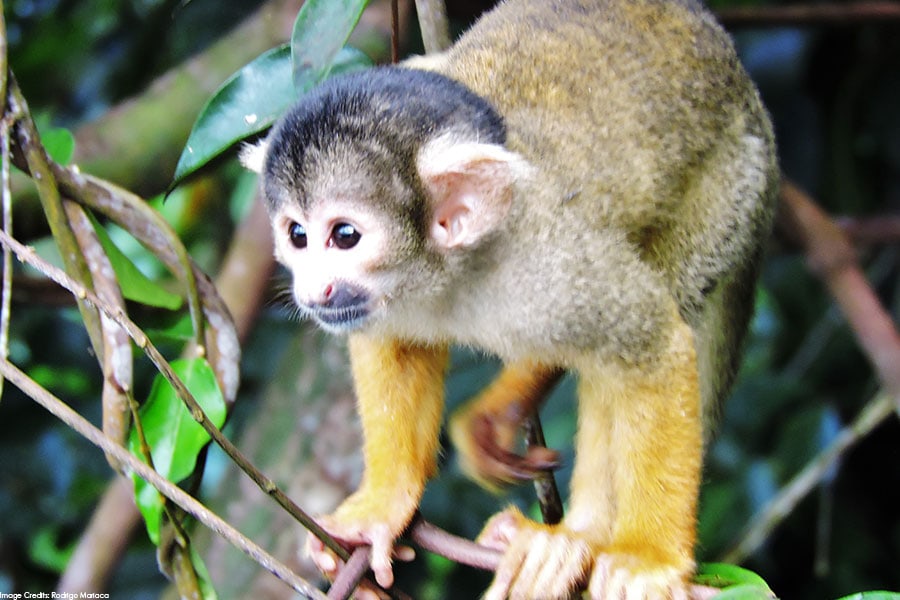
An Amazonian native, the black-capped squirrel monkey can be found in Bolivia, western Brazil, and Eastern Peru. It can be differentiated from other kinds of squirrel monkeys by the namesake black fur on its head, which looks like a cap.
Like most primates, black-capped squirrel monkeys tend to live in large troops composed of as many as 75 monkeys. They search for food together, feeding on a range of fruits, seeds, and insects. Although they prefer a plant-based diet, the monkeys can end up relying entirely on animal prey during the dry season.
Black-capped squirrel monkeys have tails which are longer than their head and body combined. Despite this, their tails aren’t prehensile, meaning they can’t use them to swing from tree to tree. They do help the monkeys maintain a better balance though. This is especially useful as they’re known to live among the canopies.
5) Common Potoo
IUCN* Status: Least concern
If you’re not hiking into the Amazon forest with an Aqua Expeditions naturalist guide, you probably won’t be able to spot the Common Potoo. Also called the Grey Potoo, this nocturnal bird has feathers that remarkably resemble the color and texture of tree bark. In the day, it perches on a tree branch or stump, resting with its head in an upright position to completely blend in.
During the night, you might hear the distinctive warble of the Common Potoo — a harmonious song that varies in pitch and volume, as if they are warming up for a concert! Listen below:
6) Hoatzin
IUCN Status: Least Concern
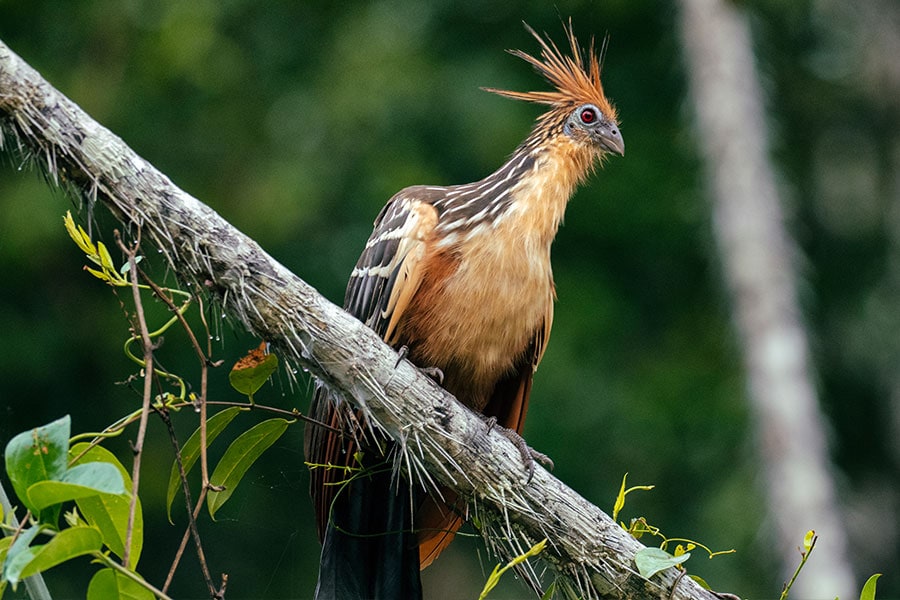
As we sail the Pacaya Samiria National Reserve, there are wonders to see around every corner. Perhaps, the strangest one of them all is the Hoatzin bird. With claws on their wings, Hoatzins bear a striking resemblance to Archaeopteryx, a dinosaur from the Jurassic era.
Commonly known as the ‘stinkbird’, you’ll most likely want to spot Hoatzins from a distance. The birds ferment vegetation in their stomach – much like cows do – which gives them an odor so unpleasant that it actually serves as a defense mechanism.
Hoatzins are rarely – if ever – hunted by humans. As a result of this, they don’t shy away as we pass through their habitat. Aboard Aqua Expeditions’ tenders, you’ll be able to see Hoatzins – with their reddish-brown crest and dark and light brown feathers – perched on branches relatively close to the ground.
Although they have fully developed wings, Hoatzins are very clumsy by nature and tend to avoid flying. Being herbivores, they don’t need to hunt for food. Hoatzins spend up to four hours a day eating green plants such as succulents and legume trees.
7) Brown-Throated Three-Toed Sloth
IUCN Status: Least concern
An amazing Amazonian resident to see in the wild, the three-toed brown-throated sloth lives an unhurried life. The creature spends 15 to 18 hours a day sleeping in the trees, which may be during the day or night.
Taking things really slowly, the sloth’s multi-chambered stomach and digestive systems require two weeks to digest one meal. The sloth, however, goes through the hassle of climbing down to the forest floor every eight days to defecate — a habit that scientists haven’t been able to explain.
In the sloth dating game, it’s the female who makes the first moves, says George. When in the jungle, keep your ears peeled for their screams, which sound extremely human-like!
8) Black Caiman
IUCN Status: Conservation Dependent
It’s only fitting for the largest member of the alligator family to live in the world’s largest river basin. Black caimans can grow to be as long as six meters in length and weigh up to 600 kilograms. Can you imagine floating side-by-side one of these behemoths while aboard one of Aqua’s private skiffs? Now, that’d be a story worth taking back home.
On the fifth day of our seven-night Amazon tour, guests get to take an evening ride along the black waters of the Pacaya River. Be sure to look around carefully because the caimans’ eyes are the only part of them which aren’t camouflaged. When our Aqua naturalist guides spot a juvenile caiman, they might even gently lift it from the river to let the guests have a better look. If it’s a photo-op you’re after, there will never be a better chance.
Black caimans used to be endangered back in the 1970s due to excessive poaching. Today, conservation efforts have helped their population recover and they’re steadily moving towards the safe zone. The return of black caimans has also helped bring the piranha and capybara population under control. Their numbers had grown unnaturally high, creating an imbalance in the ecosystem.
9) Amazonian Manatee
IUCN Status: Vulnerable

Although the manatee is on the checklist of every visitor to the Amazon, many of them usually miss the chance to see it in its natural habitat. Classified as a vulnerable species, it is estimated that less than 10,000 Amazonian manatees remain in the entire Amazon although their numbers continue to decrease. Fortunately, many of these manatees have settled in the calmer, shallower waters of the Peruvian Amazon, particularly in areas of the nutrient-rich flooded forest away from the river’s main branch.
Aqua Expeditions actively supports the Manatee Rescue Centre in Iquitos, Peru, where our operations are based. The Center rescues and rehabilitates orphaned or injured manatees before releasing them back into the wild — more than 26 manatees have been released since 2009. Our Amazon itineraries include a visit to the center, where guests can see firsthand the conservation efforts and learn about this vulnerable species and its threats.
10) Capybara
IUCN Status: Least Concern
With their seemingly unimpressed facial expression, capybaras are nevertheless highly social creatures. These rodents also live in large groups of about 20 to 30 and enjoy spending time dipping in the Peruvian Amazon’s waterways and mud banks in the day.
Capybaras can also remain submerged in water for five minutes and run as fast as a horse, which partly explains why they’re not an endangered species. Some locals hunt them for their meat and hide, not minding the fact that capybaras occasionally eat their own waste as a source of bacterial gut flora. We’re guessing these creatures have never heard of yogurt.
11) Paiche
IUCN Status: (Data deficient)
Once close to extinction, the paiche (arapaima gigas) fish now thrive in the Amazon river thanks to sustainable fishing programs run by the river communities. The paiche can grow up to 2 meters (6 feet 7 inches) in length and weigh up to 200 kilograms (441 pounds), making it one of the largest fishes in the Amazon.
On our luxury Amazon river ships, renowned chef Pedro Miguel Schiaffino delivers a world-class menu featuring the paiche. At the same time, Aqua Expeditions is committed to conserving the species by working with local communities to practice sustainable fishing techniques. We buy only from certified fish farms, where the paiche is nurtured to an optimal size for consumption.
Over the last decade, Aqua Expeditions’ conservation efforts have played a role in bringing the Paiche population up from sub-500 to over 10,000, as it currently stands.
12) South American Tapir
IUCN Status: Vulnerable
While not the prettiest looking animal, a sighting of the South American tapir in the Peruvian Amazon rainforest is special in its own right. Highly mobile on land and in water, tapirs are the most primitive large mammals in the world and have been around for 20 million years.
A relative of the rhinoceros, the South American tapir generally feeds only at night while hiding in the cool forest in the day. If these herbivores happen to be hungry, you can witness its unique way of eating; a long, flexible proboscis, or snout, grasps leaves, shoots, buds, fruit, and small branches.
The South American tapir is protected inside the Amazon rainforest, but increased deforestation, poaching, and agricultural development outside these areas are driving species numbers down.
13) Agami Heron
IUCN Status: Vulnerable
Classified as vulnerable, this elusive bird is on the IUCN Red List because of habitat loss in the Amazon, but in the protected Pacaya Samiria National Reserve a handful of Agami heron flocks have found their sanctuary.
If you’re an avid birdwatcher, you will be in good hands if you follow an Aqua Expeditions naturalist guide. “Agami herons are very shy, but they nest together in colonies of hundreds, sometimes thousands, of nests. It’s quite amazing,” says George.
One of the Agami heron’s most distinctive behaviors is its courtship ritual, which both sexes participate in. The area between the eye and the bill of the bird can turn an intense red, while a silver crest can be seen on its neck.
14) Yellow-Spotted Amazon River Turtle
IUCN Status: Vulnerable
Also known locally as taricaya turtles, the yellow-spotted Amazon river turtle has evolved differently from other species; they protect themselves by folding their necks to the side under their shell (rather than retracting them backward into the shell).
Currently listed as vulnerable, it seems that everybody wants to get their hands on the taricaya turtle. Taricaya hatchlings and juveniles are at high risk of predation by birds, snakes, large fish, frogs, mammals, and humans. The turtles are especially vulnerable to illegal egg poaching.
Since 2012, Aqua Expeditions has been part of the Taricaya Turtle Project in the Pacaya Samiria National Reserve. Working closely with authorities at the Reserve, we have overseen the incubation of eggs and, with the help of our guests aboard the Aria Amazon, released more than 1400 hatchlings safely into the wild. Guests can also “adopt” a turtle for US$5, the proceeds of which will help to fund this project together with our financial contribution.
Watch the video below to find out more about the Taricaya Turtle Project.
15) Horned Screamer
IUCN Status: Least Concern

It’s far more likely that you’d hear a Horned Screamer before seeing one. The name might clue you into the reason why. Horned Screamers are the largest of the Screamer family, and naturally, the loudest too. They are non migratory birds which are native to the Amazonian wetlands.
Found across South American countries including Peru, Brazil, and Ecuador, the birds have an unmistakable presence. They are mostly black with a white belly and can grow to be as tall as 37.5 inches. Their noises can be heard as far as three kilometers away, and they’re often on repeat for hours on end.
Horned Screamers perform three main calls: the “Moo-co” used to alarm others of a predator or for the relocation of other screamers; the honking call used for greetings; and the trumpeting, which is the most intense and acts as a distance call and a morning wake up. Horned screamers are non-migratory birds that mate for life; males and females often engage in duets, especially during breeding season.
Navigating the Amazon river responsibly
Aqua Expeditions is committed to conservation in the ecologically sensitive regions of the Amazon, as well as the Mekong river, and seas of East Indonesia. In addition to wildlife preservation, we have adopted procedures to minimize environmental contamination and preserve the natural habitats and waterways through which we travel. Learn more about our sustainable operations.
Interested to discover the Peruvian Amazon’s wildlife with our experienced naturalist guides? Join us on board our luxury expedition ships, the Aria Amazon and brand-new Aqua Nera.



